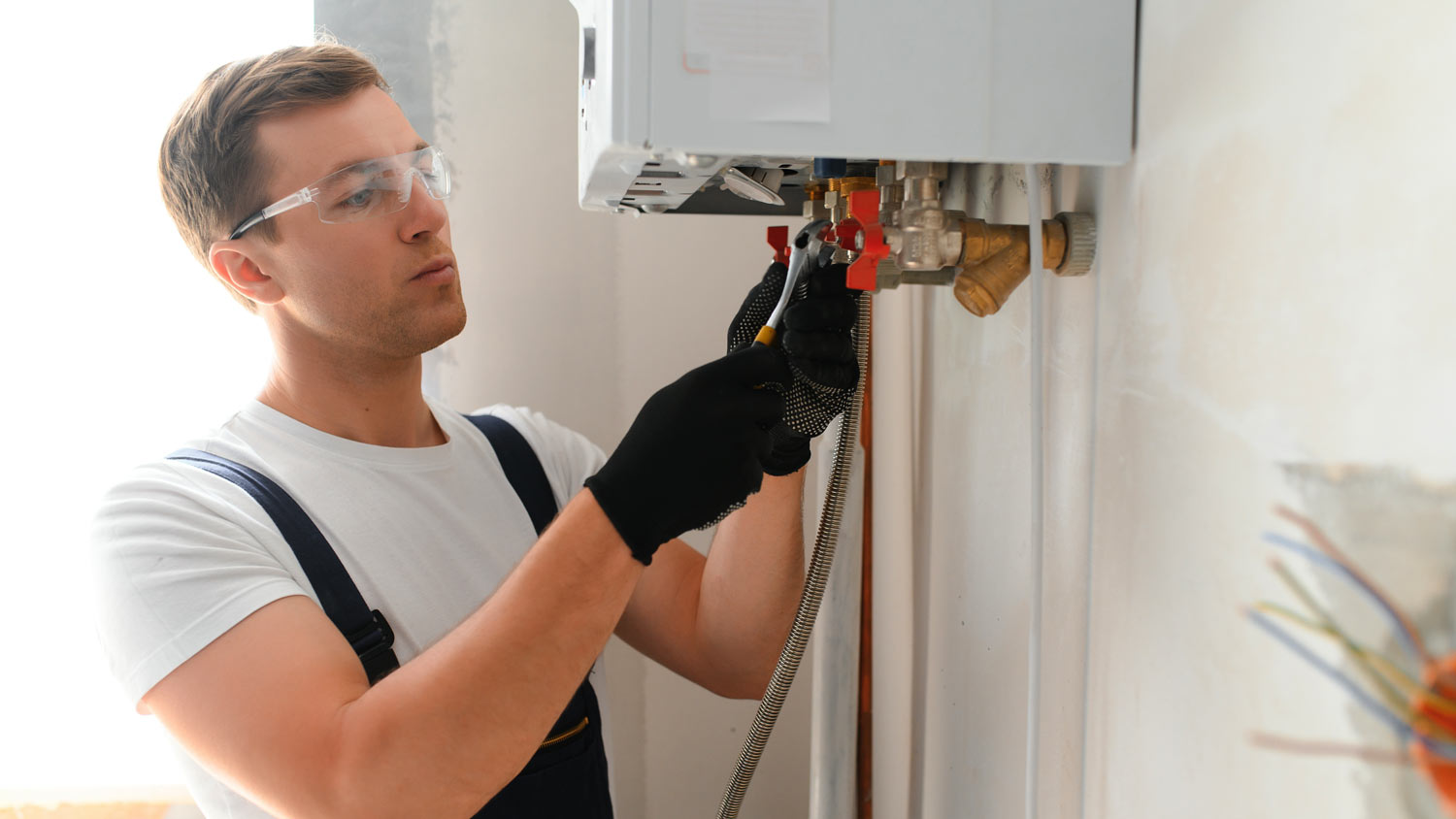
A blower door test can identify air leaks in your home and help boost energy efficiency. Use this blower door test cost guide to see what your test will total.
Let’s shed some light on this common furnace problem


If your pilot light keeps going out, there may be a draft close to your furnace.
Sometimes, a pilot light can blow out during a storm.
A dirty thermocouple or blocked pilot tube can snuff out your pilot light.
If your furnace isn’t getting enough gas, your pilot light won’t stay lit.
Wondering why your pilot light is going out? This common problem has several potential causes, ranging from drafty windows and doors near your furnace to gas supply issues—so it might take some troubleshooting to figure out why your pilot light won’t stay lit. Below, you’ll find four common causes, along with solutions for each one.
Sometimes, a draft or gust of wind can blow out your pilot light. This could happen on a particularly windy day or during an intense storm. But if it occurs regularly, it could be because your furnace is near ductwork or windows or doors.
After a big storm, you can manually relight your pilot light. However, if this is an ongoing problem, inspect the area around your furnace for drafts. If there’s an obvious leak from a window or door, you can seal it with caulk, weatherstripping, or a similar material. Then, test the pilot light again.
Can’t find the source of the draft? Stop using the furnace and call a local furnace repair pro. The draft could be coming from your flue pipe, which may mean that your furnace isn’t venting properly—and can lead to a dangerous buildup of carbon monoxide in your home.
In a gas furnace, the thermocouple detects when the pilot light is burning. If it senses that the pilot light is out, it will cut the gas supply to prevent gas from leaking into your home.
Over time, a thermocouple can get dirty, damaged, or simply wear out. In situations like these, the thermocouple can malfunction and mistakenly shut off the gas supply—which will make the pilot light go out.
Shut off the gas and power to the furnace.
Put the gas valve in the “off” position. Let the furnace cool down for at least five minutes.
Remove the thermocouple by gently twisting it loose with your fingers or using a screwdriver. (If you aren’t sure where to find the thermocouple, look for the metal rod near the pilot light—or check your user manual.)
Use a scouring pad or wire brush to remove any soot and other build-up.
Rinse the thermocouple and let it dry completely.
Inspect the thermocouple for cracks or other damage. If you find any, you may need to replace it.
Reattach the thermocouple in the furnace.
Turn the gas and power on, then turn on the furnace to see if the pilot light stays lit. If not, you may have a faulty thermocouple that needs replacement.
A pilot light receives a steady supply of gas through the pilot tube. If dirt or dust collects in this tube, it can block the flow of gas—and, as a result, extinguish the pilot light.
Before working on the pilot tube, shut off the gas and electricity to the furnace. Then, switch off the gas valve and wait for the furnace to cool down. Remove the pilot tube and spray it with a few blasts of compressed air to dislodge any debris.
Your furnace isn’t always to blame if the pilot light won’t stay lit. In some cases, there could be an issue with your gas. For example, if there’s significant demand for gas in your area, it could reduce or cut off the gas supply to your furnace, which would make your pilot light go out.
You could also experience house-wide gas supply issues if someone closed your gas valve or if there’s a problem with the gas regulator outside your house.
Check the other gas appliances in your house. If none of them turn on, you may have a gas supply issue or a faulty gas regulator. Contact your gas company for next steps.

If you’ve tried these DIY fixes or aren’t comfortable attempting your own HVAC work (totally understandable!), it’s time to call a pro for furnace repair. Not only do they understand the proper safety protocol of working with natural gas and electricity, but they can generally diagnose and fix common furnace problems quicker than non-professionals.
From average costs to expert advice, get all the answers you need to get your job done.

A blower door test can identify air leaks in your home and help boost energy efficiency. Use this blower door test cost guide to see what your test will total.

Inspections are an essential part of furnace maintenance. Prevent inconvenient breakdowns by budgeting for furnace inspection costs and repairs.

The average boiler installation cost depends on size, system type, and other factors. Keep reading to learn the cost of a new boiler.

Who do you call to fix a boiler? This easy guide will help you hire the right pro for the job of fixing your boiler.

Wondering how to bleed a baseboard heater without a bleed valve? Here’s how to remove trapped air the old-fashioned way, with a boiler drain and water replacement.

An icy coil can create costly AC repairs. Learn what to do if the evaporator coil freezes to ensure your HVAC system operates efficiently.